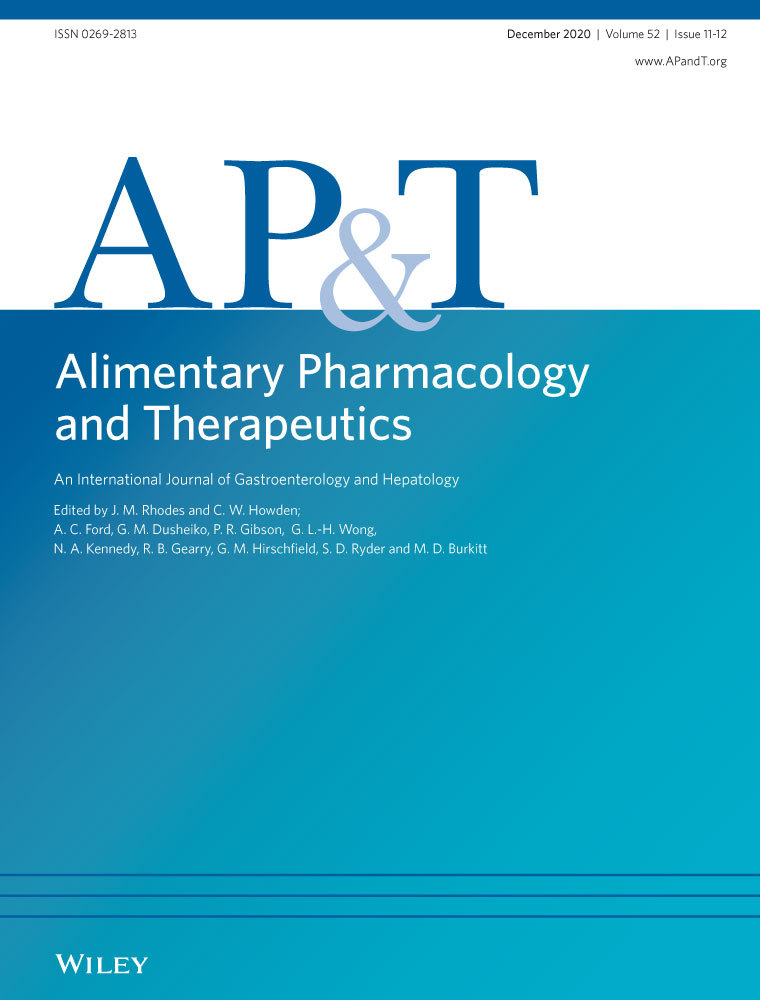Letter: SARS-CoV-2 induced gastrointestinal inflammation—authors' reply
Abstract
LINKED CONTENT
This article is linked to Taxonera et al and Reuken et al papers. To view these articles, visit https://doi.org/10.1111/apt.15804 and https://doi.org/10.1111/apt.16087
EDITORS,
We thank Reuken et al for their comments and interest in our study reporting the incidence and clinical characteristics of COVID-19 among IBD patients.1, 2 A relevant finding of our study was the high rate of diarrhoea as a presenting symptom among IBD patients with COVID-19.
Reuken et al based their comment on new data from a study that included hospitalised COVID-19 patients in a single centre. The authors aimed to correlate the presence of SARS-CoV-2-RNA in faecal samples with clinical symptoms, faecal calprotectin and markers of systemic inflammation.1 The proportion of patients with diarrhoea at admission was considerably lower than in our IBD patients with COVID-19, but their study included non-IBD patients. SARS-CoV-2 has a high affinity for angiotensin-converting enzyme 2 (ACE2), which is responsible for the viral invasion of human cells and is abundantly expressed in gastrointestinal cells.3 Differences in the expression of intestinal membrane-bound ACE2 or of plasma ACE2 observed in IBD patients4 could be associated with the high rate of diarrhoea in IBD patients with COVID-19 in our study.2
Reuken et al reported higher faecal calprotectin levels in patients with detection of SARS-CoV-2-RNA in faecal samples, indicating active viral replication in enterocytes causing significant gastrointestinal inflammation. A prior study reported high faecal calprotectin levels in COVID-19 non-IBD patients whose diarrhoea had resolved, and even higher levels in those with ongoing diarrhoea when compared with COVID-19 patients without diarrhoea.5 In both studies, faecal calprotectin concentrations were associated with higher serum interleukin-6 concentration, indicating more severe systemic inflammation.1, 5 This finding raises the possibility that patients with SARS-CoV-2 infection causing relevant intestinal inflammation may potentially have more severe COVID-19. Conversely, a recently published study reported that among COVID-19 patients, the presence of gastrointestinal symptoms such as diarrhoea was associated with a trend towards lower intensive care unit admission rate and lower mortality during short-term follow-up.6 Furthermore, patients with IBD, who often have diarrhoea as a presenting symptom of SARS-CoV-2 infection, do not appear to have an increased risk of progression to severe forms of COVID-19.7, 8 It has been proposed that maintenance therapy with biologics in IBD patients, and anti-TNF agents in particular, may also play a protective role for severe COVID-19.9 These combined findings may suggest that gastrointestinal symptoms such as diarrhoea indicating significant gastrointestinal inflammation can be associated with a more indolent form of COVID-19, although this hypothesis needs to be further evaluation in larger studies.
ACKNOWLEDGEMENTS
The authors thank Dr G. Morley for reviewing the English manuscript.
Declaration of personal interests: The authors' declarations of personal and financial interests are unchanged from those in the original article.2




